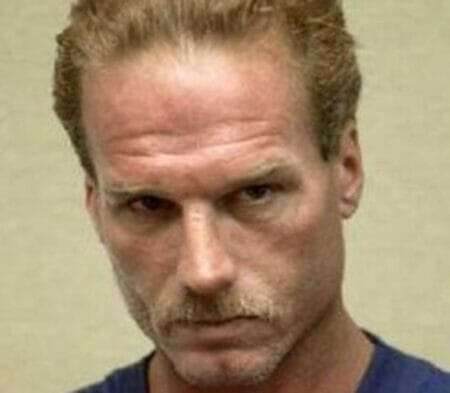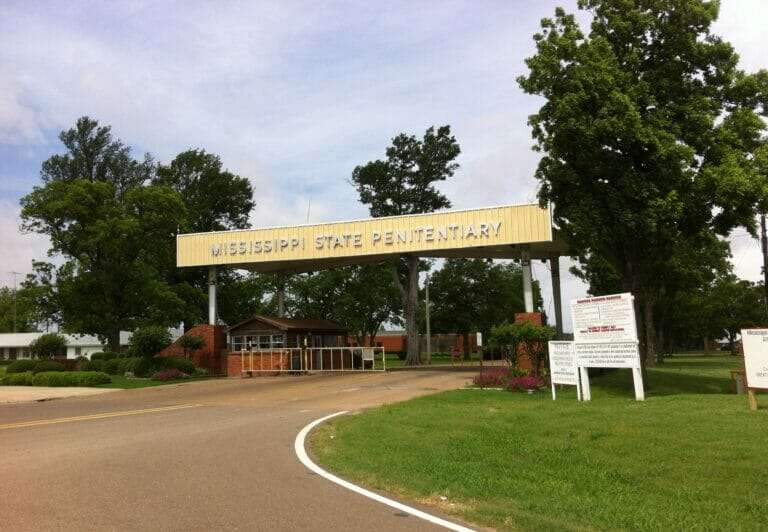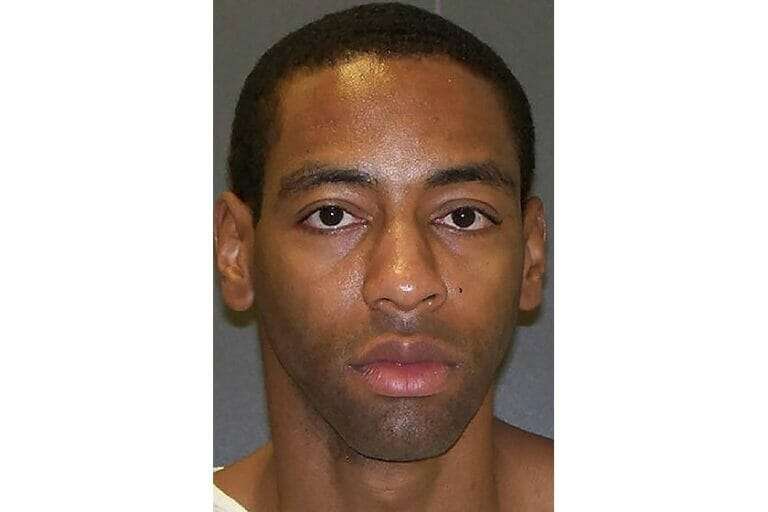Gary Sampson Federal Death Row

Gary Sampson was sentenced to death by the Federal Government for the murders of three people in Massachusetts. According to court documents Gary Sampson, who is a convicted bank robber, would be picked up hitchhiking by Philip McCloskey who he would later beat to death. Sampson would then murder Jonathan Rizzo who would also pick up Gary who again was hitchhiking. Rizzo would be tied to a tree and stabbed 24 times. The third victim, Robert Whitney, was murdered in New Hampshire after being strangled. Gary Sampson would attempt to murder a fourth victim but the person survived. Gary Sampson would confess to the three murders and be sentenced to death. Gary Sampson would die behind bars in December 2021
Gary Sampson 2021 Information
| Register Number: 23976-038 | |
| Age: | 61 |
| Race: | White |
| Sex: | Male |
| Located at: Terre Haute USP | |
| Release Date: DEATH SENT |
Gary Sampson More News
It was a day not so much of emotion, but of exhaustion.
Sixteen years after the killings, 13 years after the first jury sentenced him to death and six years after a judge overturned that verdict on account of juror misconduct and ordered a new trial, the latest trial of admitted killer Gary Lee Sampson also ended in a death penalty verdict.
A federal jury decided Monday afternoon that Sampson shall be executed for the 2001 carjacking and slaying of college student Jonathan Rizzo.
“Gary Lee Sampson will pay for his life for all the heinous crimes he committed,” said Massachusetts U.S. Attorney Carmen Ortiz. “And he received the maximum sentence that the law provides.”
The verdict against Sampson marks the second time in two years (the other was Dzhokhar Tsarnaev) that a federal jury has imposed the death penalty in Massachusetts, a state that has no death penalty and has not executed a defendant since 1947.
For the killing of grandfather Philip McCloskey, Sampson, however, escaped the death penalty and was sentenced by the jury Monday to life in prison without the possibility of parole.
There was an economy of tears and dramatics from those who had endured the ordeal, bearing witness to twice-told testimony and twice-shown photos of the corpses of their loved ones.
“It’s a very somber and sobering day for us, but we know justice has prevailed,” said Michael Rizzo, the father of 19-year-old Jonathan.
Seven men and five women filed into the courtroom — the forewoman holding the large verdict form to her chest — after 16 hours of deliberations. In his first trial, Sampson had wiped tears from his eyes upon hearing the verdict. Second trial was a dry one.
This time around, after imposing the death penalty for the death of Jonathan Rizzo, the jurors failed to reach unanimity on the verdict regarding victim McCloskey, age 69.
“We are disappointed in the verdict in the way it was split,” Ortiz said Monday.
The juror’s decision, which spares Sampson from a second death penalty for taking McCloskey’s life, seemed puzzling. Jurors had heard Sampson’s graphic, unremorseful confession to police about stabbing the older man over and over again, in a frenzy that nearly decapitated him.
Philip McCloskey’s son, Scott McCloskey, however, took comfort in knowing death by execution for killing someone else, namely Rizzo, would still be Sampson’s fate.
And practically speaking, one execution of Sampson is as good as two.
“It all ended up with the verdict of death so I’m happy with the results,” said Scott McCloskey. “It’s done, and hopefully, we’ll never have to go through this again. God bless my father. May he rest in peace. That’s all I got.
In filling out a 29-page verdict form, the jury had shown some consideration for Sampson. One or more of them agreed that he was mentally ill and suffered a mild traumatic brain injury as a child, that he had been the victim of physical and sexual violence in prison.
But not one juror agreed that traumatic brain injury explained his “lifetime struggles to control his behavior” or that he demonstrated any acceptance of responsibility for killing his victims.
One of the mitigating factors the defense submitted for the jurors was this: “Gary Sampson wants to love and be loved.” To that, every juror voted “no,” a devastating rejection of the defense’s call for mercy.
“This is what we wanted, this is what we fought for and this is what we’ve been here for for the last 15 years,” Michael Rizzo said, giving thanks.
One death penalty was enough to be shared by three families, said Mary Rizzo, Jonathan’s mother. Sampson was also sentenced to a separate life sentence for the 2001 killing of Robert ‘Eli’ Whitney in New Hampshire.
“Philip, Eli and Jonathan all are in my heart and in my pictures in my wallet every single day. This has been brutal,” she said. “I am so glad it is over.”
What is not over, however, as the history of the federal death penalty demonstrates, are the years of likely appeals should the 57-year-old Sampson live that long.
Until then, the other sentence, the one imposed with regard to McCloskey will suffice: life in prison without the possibility of parole, until Sampson is cleared for his execution.
https://www.wbur.org/morningedition/2017/01/10/gary-lee-sampson-death-penalty-sentence
Gary Sampson Death
Gary Sampson, of Abington, who murdered three people during a 2001 killing spree across the South Shore and into New Hampshire, died at a federal medical prison in Springfield, Missouri, on Tuesday, Dec. 21, at age 62.
Over the course of four days in July 2001, Sampson killed Jonathan Rizzo, 19, of Kingston; former Quincy resident Philip McCloskey, 69, of Taunton; and Robert Whitney, 58, of New Hampshire.
After pleading guilty, Sampson was sentenced to death in 2003 for the deaths of Rizzo, a college student, and McCloskey. That initial death sentence was overturned after a federal judge determined that one of Sampson’s jurors had lied about her background.
He was sentenced to death a second time following an eight-week death penalty trial in federal court in February 2017.
Sampson was tried separately for Whitney’s murder and received a life sentence. Massachusetts does not have a state death penalty, but defendants charged with federal crimes in the state can be put to death.
After the second trial, survivors of Sampson’s victims faced him.
“You showed no remorse, and your apology was robotic,” Philip McCloskey’s son, Scott McCloskey, told Sampson. “Rot in hell.”
Family members spoke of their hatred for Sampson, of the devastation he’d caused in their lives, and of their commitment to bringing him to justice. Some of them said they could not bear the thought of him enjoying himself in prison with access to books and television.
“I don’t know if you will ever receive the death penalty, and I don’t really care,” said Mary Rizzo, Jonathan Rizzo’s mother. “I do care that you will have more restriction on death row.”
Rizzo said she was able to push Sampson out of her head during the day, but her nights were still haunted by images of her son’s death. For years, she said she was unable to be the wife and mother her family deserved because of the “dark hole” she found herself in.
“I waited up for them on the couch, thinking that if they didn’t come home it would be my fault and no one else’s, just as I thought Jonathan’s death was my fault,” she said of her two sons.
On Jan. 11, Sampson’s appellate attorneys, Judith Mizner, Madeline Cohen and Sara Cohbra, filed a new brief arguing his death sentence should be overturned.
Although no cause of death has been released, medical records included in the latest appeal of his death sentence showed he had a life expectancy, when he was 55, of nearly three years. He was diagnosed with end-stage liver disease, likely caused by an untreated hepatitis C infection.
In 2016, Sampson’s attorney argued that he was terminally ill and that should be a good enough reason to not give him the death penalty.
Shortly before the murders, Sampson, a drifter who grew up in Abington, called the FBI to turn himself in for a series of bank robberies in North Carolina. After the FBI didn’t send anyone to arrest him, he started his killing spree on July 24, 2001, according to court documents.
McCloskey, a retired plumber, offered Sampson a ride in Weymouth. Sampson walked McCloskey up a hill in Marshfield, where he killed him and tried unsuccessfully to steal his car, according to court documents.
While Sampson was hitchhiking in Plymouth three days later, Rizzo offered him a ride. Sampson held him at knifepoint and ordered him to drive him to Abington, where he killed him and took his car, according to court records.
Sampson fled to New Hampshire and broke into an empty vacation home. He was discovered by a family friend of the owner, Whitney, on July 30. After a fight, he tied Whitney to a chair and strangled him with a rope, according to court records. He stole Whitney’s car and fled to Vermont, where he abandoned it a day later. Hitchhiking again, he was picked up by William Gregory, who escaped from his moving car after Sampson threatened him with a knife.
Sampson broke into another vacation house, called 911 and surrendered to Vermont state troopers, according to court records.






